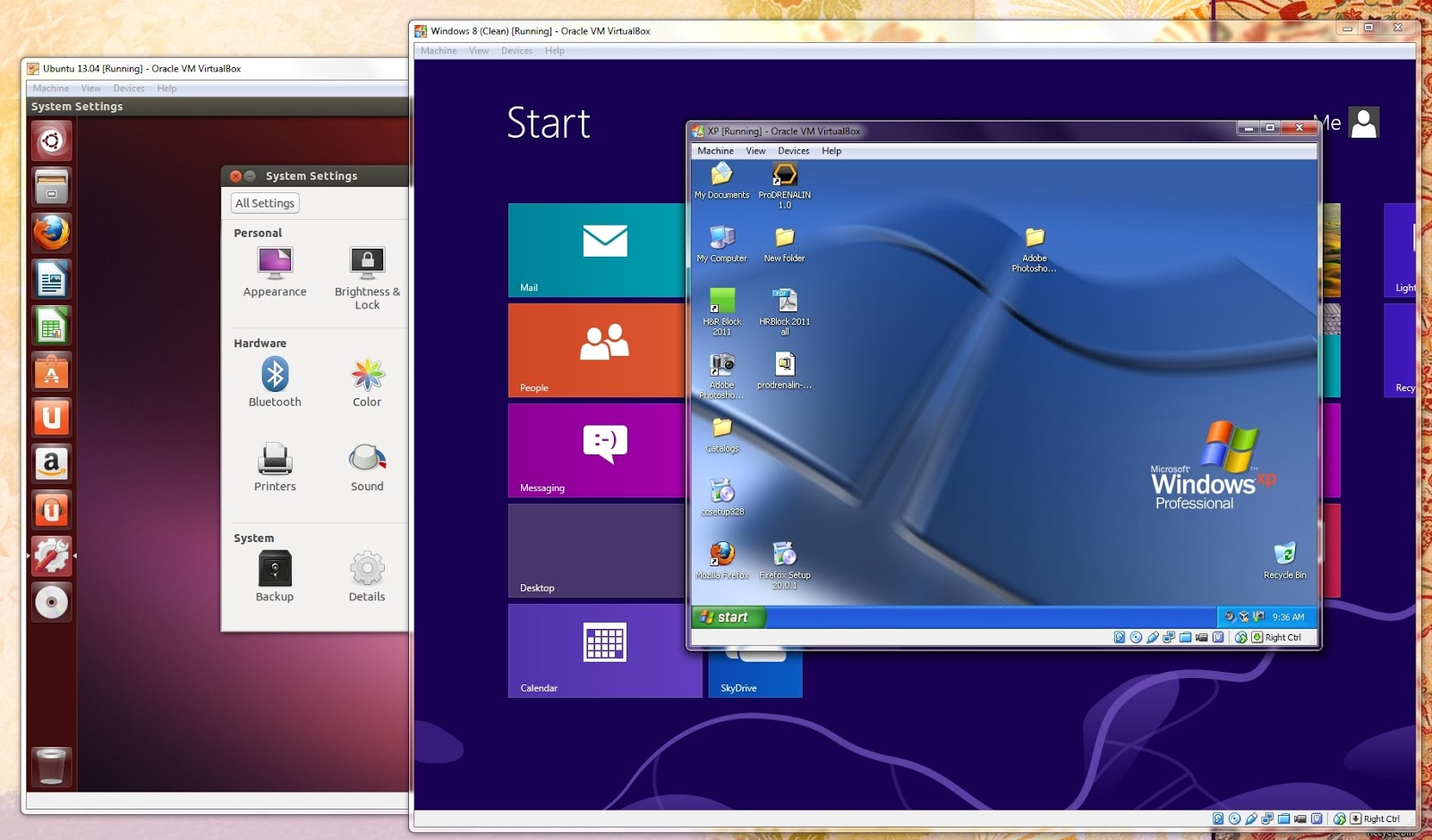What is VirtualBox?
Oracle VM VirtualBox is a cross-platform virtualization application developed by the Oracle Corporation. It allows users to install operating systems on virtual hard disks such as Windows, macOS, Solaris and Linux.
For other versions of Ubuntu Desktop including torrents, the network installer, a list of local mirrors, and past releases see our alternative downloads. Ubuntu 20.10 The latest version of the Ubuntu operating system for desktop PCs and laptops, Ubuntu 20.10 comes with nine months, until July 2021, of security and maintenance updates. Jun 09, 2015 Running both Ubuntu and macOS at the same time will “slow down” your Mac. The more memory you have and the faster your CPU and/or hard drive is, the less you’ll notice it. Let’s get started! First up, head over to the Ubuntu download page and download Ubuntu. Now you’ll need to download and install VirtualBox. VirtualBox is a general-purpose full virtualizer for x86 hardware, targeted at server, desktop and embedded use.For a thorough introduction to virtualization and VirtualBox. Kubuntu is a free, complete, and open-source alternative to Microsoft Windows and Mac OS X which contains everything you need to work, play, or share. Check out the Feature Tour if you would like to learn more! Kubuntu unites Ubuntu with KDE and the fabulous.
As an example, you can run Windows and Linux on your Mac, run Windows server on your Linux server, or run Linux on your Windows PC while running your other existing applications.

Disk space and memory are the only problems that you'll face when installing multiple virtual machines.
Why You’ll Need It
- Oracle’s VirtualBox is easy to install and use
- It's free
- You can run and experience any operating system safely
- If you’re a developer, VirtualBox can be used as a tool for safely testing your own development projects in multiple OS environments
- It can run everywhere from small embedded systems to laptops
- It's good for testing and disaster recovery as it can be easily copied, backed-up, and transported between hosts
VirtualBox Installation
VirtualBox can be downloaded here: VirtualBox Downloads
Why Ubuntu?
- It's free
- Easy customization: The GNOME desktop environment helps you customize easily
- It's secure
- Ubuntu is open-source
- Friendly and supportive community
- Low system requirements
- According to FOSSBYTES, Ubuntu is the second best Linux distro for programming and developers [2019 Edition]
- It's beginner friendly
Setup for Ubuntu
First, open VirtualBox, then click 'New' to create a virtual machine.
Enter 'Ubuntu' as the name, select 'Linux' as the type, and select Ubuntu (64-bit) as the version.
NOTE: Select any amount of memory you wish, but don't add more than 50 percent of your total RAM.

Check the 'Create a virtual hard disk now' option so we can later define our Ubuntu OS virtual hard disk size.
Now, we want to select 'VHD (Virtual Hard Disk)'.
Next, we'll dynamically allocate storage on our physical hard disk.

We want to specify our Ubuntu OS's size. The recommended size is 10 GB, but you can increase the size if you wish.
After creating a virtual hard disk, you'll see Ubuntu in your dashboard.
Now, we have to set up the Ubuntu disk image file (.iso).
The Ubuntu disk image file can be downloaded here: Ubuntu OS download
To set up the Ubuntu disk image file, go to settings and follow these steps:
- Click 'Storage'
- In storage devices, click 'Empty'
- In attributes, click the disk image and 'Choose Virtual Optical Disk File'
- Select the Ubuntu disk image file and open it
Click OK.
Your Ubuntu OS is ready to install in VirtualBox. Let's start!
NOTE: Ubuntu VirtualBox installation and actual OS installation steps may vary. This guide helps you to install Ubuntu in VirtualBox only.
Let's install Ubuntu!
Click Install Ubuntu.
Select your keyboard layout.
In the 'Updates and other software' section, check 'Normal installation' and continue.
In 'Installation type', check 'Erase disk and install Ubuntu'.
Click 'Continue'.
Choose your current location.
Now, set up your profile.
You'll see Ubuntu installing.
After the installation, restart it.
After logging in, you'll see the Ubuntu desktop.
We have successfully installed Ubuntu in VirtualBox. It's ready to use for your future development projects.
Let's verify the installation.
Open your terminal (Press Ctrl+Alt+T) and type in the commands below and check if they work.
- pwd: This will print the current working directory
- ls: This will list all items in your current directory
After checking those, power off your machine by using the following command.
Conclusion
VirtualBox is free and is a great tool for running multiple operating systems on a single OS. Ubuntu has many benefits. If you're a beginner to Linux, I would recommend you use Ubuntu as it's beginner friendly.
Please feel free to let me know if you have any questions.
You can contact and connect with me on Twitter and Medium.
Thank you for reading.

Happy Coding!
Table Of Content
- 1- Download Mac OS
- 2- Create Mac OS Virtual Machine
- 3- Configure VBoxManage
- 4- Start the Mac OS virtual machine
View more Tutorials:
- 1- Download Mac OS
- 2- Create Mac OS Virtual Machine
- 3- Configure VBoxManage
- 4- Start the Mac OS virtual machine
1- Download Mac OS
| Mac OS Version | Name | Release Date |
| 10.10 | Yosemite | June 2014 |
| 10.11 | El Capitan | September 30, 2015 |
| 10.12 | Sierra | June 12, 2016 |
| 10.13 | High Sierra | June 5, 2017 |
2- Create Mac OS Virtual Machine

3- Configure VBoxManage
- LINUX (Ubuntu,..):/home/{user}/VirtualBox VMs
- WINDOWS:C:/Users/{user}/VirtualBox VMs
Oracle Virtualbox Ubuntu Image Download
Install Ubuntu On Virtualbox
4- Start the Mac OS virtual machine
Download Ubuntu
View more Tutorials:
